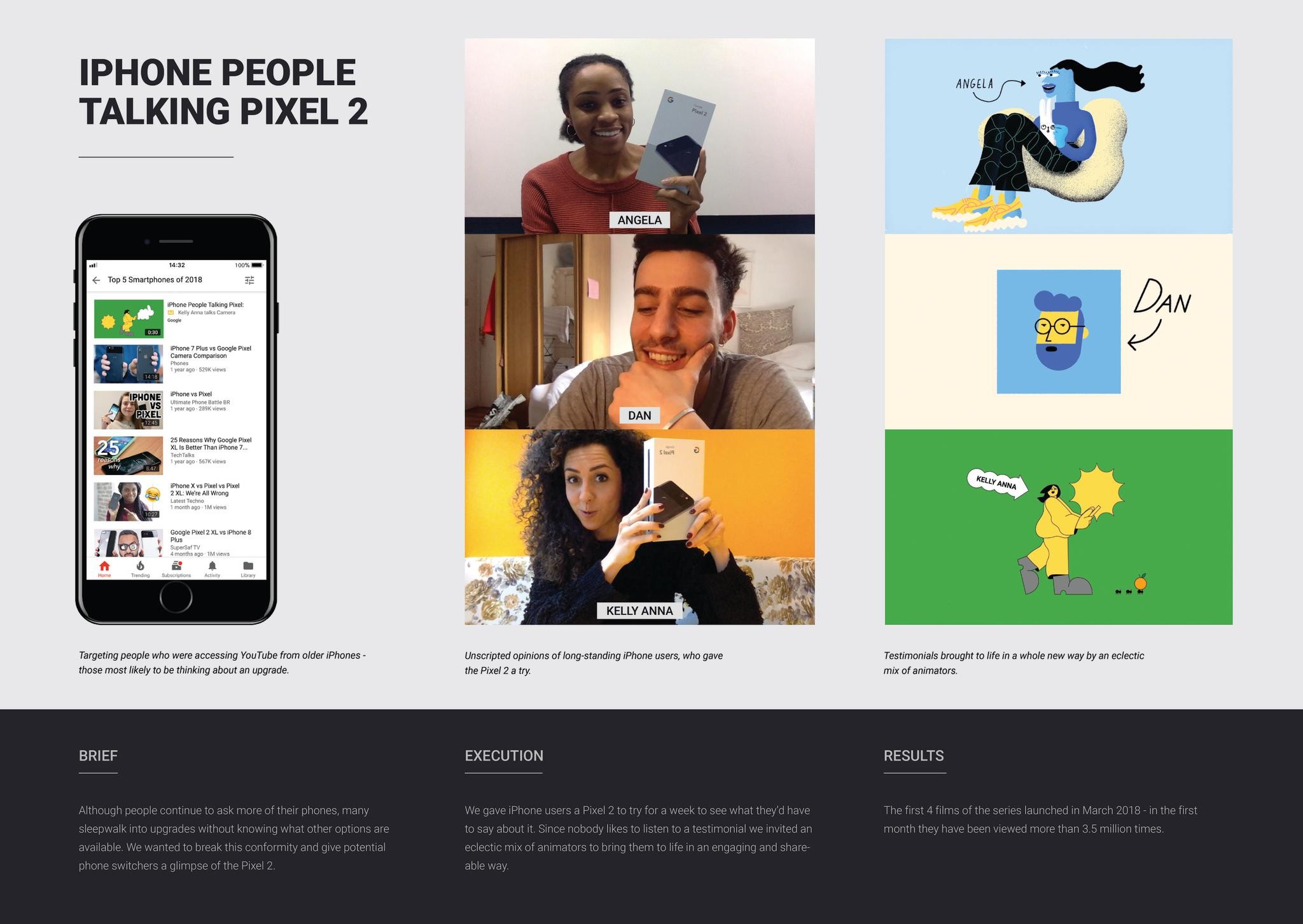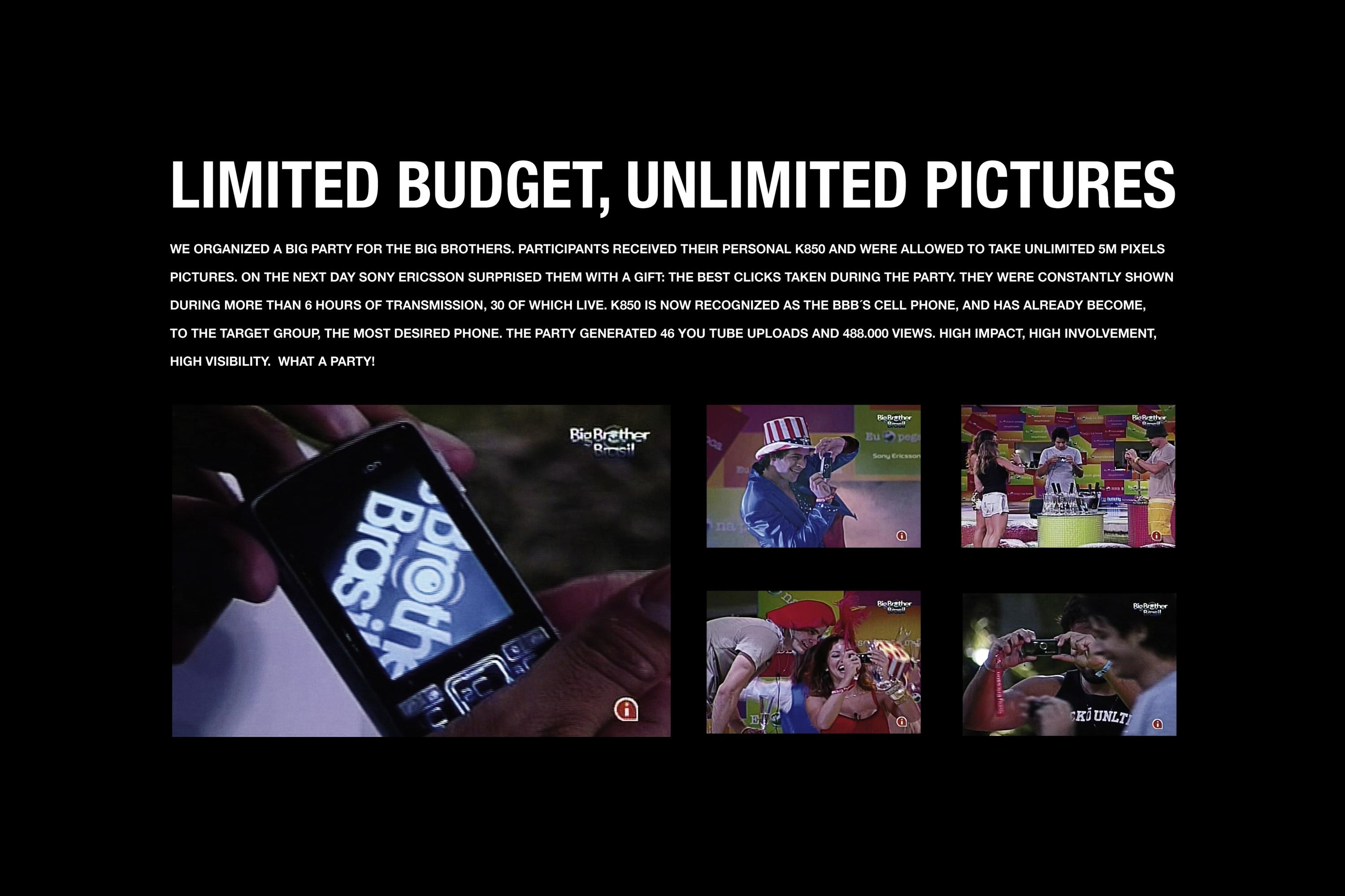Cannes Lions
Guided Frame
GOOGLE, Mountain View / GOOGLE / 2024
Awards:

Overview
Entries
Credits
Overview
Background
Guided Frame uses cutting-edge Google AI alongside Android TalkBack and the custom-built Google Tensor chip to create a Pixel Camera experience that is more optimized for people with blindness and visual impairment. Even more importantly, it leverages a partnership with blind users and blind community groups to influence the product design and technology – core to how we develop many products and features at Google. It was from this community that we heard how much the blind community loves to take selfies, food photos, and pet photos to share with their friends – and how much frustration and disappointment exists that current phone cameras are not designed for when users have vision impairment. This ongoing conversation inspired the technology that is now found within the latest version of Guided Frame and Android TalkBack on Pixel 8.
Idea
Being able to take and share photos allows many people to express themselves and connect with others - this is no different for people who are blind or low-vision. So we built Pixel Camera, which leverages Google AI on Pixel 8’s Tensor G3 chip, to identify when important objects are in frame – like people, food, pets, or even documents – and provide voice guidance and haptic feedback around when to snap a picture. The picture is automatically taken once optimal framing is in place.
Strategy
What began as a selfie-assistant for blind and low vision Pixel owners evolved into a photo-coaching tool and visual navigator for all users. The launch of Guided Frame on Pixel saw a +27% increase in blind and low-vision users in Pixel’s camera with Guided Frame and +116% increase in rear camera captures with Guided Frame 2.0 and
Debuting “Javier in Frame” at the Super Bowl to such vast consumer reception elevated not only the Guided Frame feature but also forwarded more representation for the larger number of disabled people and increased visibility of Google’s overall mission around accessibility and building products for all.
Perhaps most importantly, it delivered innovation into the lives of users. Feature usage more than doubled following the campaign.
Execution
First introduced on the Pixel 7, Guided Frame, a feature in the Pixel Camera, enhances accessibility by guiding people who are blind and low-vision to capture selfies, group photos and pictures. Using Google AI to identify what’s in the scene and communicate that information to the user, Guided Frame uses a combination of audio cues, high-contrast animations and haptic feedback to help people take photos by aligning faces and objects within the frame.
During testing, feedback from blind and low-vision users reiterated how important it is for a camera to automatically take a photo when the person’s face is centered. Users also appreciated not having to find the shutter key and voice instructions. Allowing testers to try Guided Frame in everyday life allowed the team to realize that the product could help with both selfies and group pictures.
What makes Guided Frame not only innovative but also meaningful is that it allows for creative expression, autonomy and joy for the blind and low-vision community. Many accessibility features are designed to help consumers do the bare minimum; with Guided Frame, many people are able to become the photographer and confidently document key moments in their lives and of those around them.
Similar Campaigns
12 items





